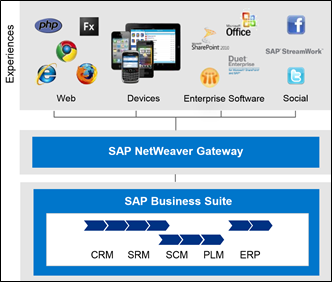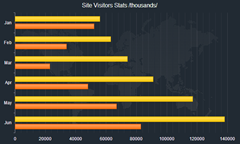On Jul 12 2014, we conducted a webinar titled “Integrate Video and Photos in your ASP.NET applications with ease”. This is part of the monthly webinars we have been doing here in Telerik India. This blog post is a recap of that webinar.
RadImageGallery & RadMediaPlayer:
As the name goes, RadImageGallery can be used to create Image Gallery in your apps with minimal coding. Similarly, RadMediaPlayer can be used to create a YouTube like Media Player with minimal coding. Both of these controls are part of our “UI for ASP.NET AJAX” suite. If you are not familiar with our “UI for ASP.NET AJAX” suite of controls, head over to our product overview page here.
You can know more about RadImageGallery here and about RadMediaPlayer here.
Slidedeck:
Here is the slide deck that was used in the webinar:
Video Recording:
We record all our webinars and the videos are available for on demand viewing. So here is the video recording of this webinar:
Q & A:
Q: Is the library of these controls free to download or require any license?
A: A trial of 30 days is available. This is a paid product from Telerik
Q: Does it take Images from online services/providers like Flicker/OneDrive and stream here in control?
A: Both of these controls provide a feature of binding data from the client side. So you can get the data as JSON on page load and bind it to the control client side.
Q: Can we have this Image Gallery in MVC?
A: No. This is a ASP.NET AJAX control. Cannot be used in MVC.
Q: does RadImageGallery provides paging?
A: Yes. RadImageGallery supports the paging
Q: Can we specify how many thumbnails to show/ or customize thumbnail settings?
A: RadImageGallery provides a thumbnails settings where we can set Width, Height, Thumbnail Width, Thumbnail Height and Thumbnail spacing.
Q: How to get and integrate these controls to Visual studio?
A: Download the controls from http://www.telerik.com/products/aspnet-ajax.aspx. Run the Installer and that will integrate the controls in the control toolbox. Go ahead from there.
Q: Can we incrase the size of the preview display and keep the thumbnails in different dimensions?
A: Yes. RadImageGallery provide Image Area Settings and Thumbnails Area Settings.
Q: Can we give the source dynamically to the rad media player?
A: Yes. The data can be bound to RadMediaPlayer through code also.
Q: Does it require any media player to be installed at client side like Silverlight/Adobe media player?
A: No. RadMediaPlayer uses the build-in HTML5 <video> and <audio> element functionality to bring powerful media capabilities to your apps without the necessity of installing additional plug-ins. It provides a quick and easy to setup way to deliver rich media web experience for websites, blogs, online TV channels, e-commerce pages, etc. For older browsers which don’t support HTML5 natively, Internet Explorer 8 and 7 in particular, the player provides a Flash fallback method to play the video or audio file by rendering a Flash object.
Q: Does the image gallery support mobile platforms? How does it perform?
A: Yes it does. It is fully responsive. Details here: http://www.telerik.com/help/aspnet-ajax/image-gallery-mobile-support.html
Q: Does this control work on IE 6?
A: We have just announced that we would be dropping support for IE6 going forward. http://blogs.telerik.com/blogs/14-06-11/ie6-is-not-supported-by-telerik-ui-for-asp.net-ajax-as-of-june-2014
T-Shirt Giveaway:
In our webinars, we usually give away 2 t-shirts to 2 lucky attendees. We randomly pick from the webinar attendees and they get our .NET Ninja T-Shirt. In this webinar, the winners are:
- Ashish Bhat
- Surya Vinukonda
Don’t worry if you didn’t win the t-shirt. Try your luck in our next webinar.
Till next time – Happy Coding.










































